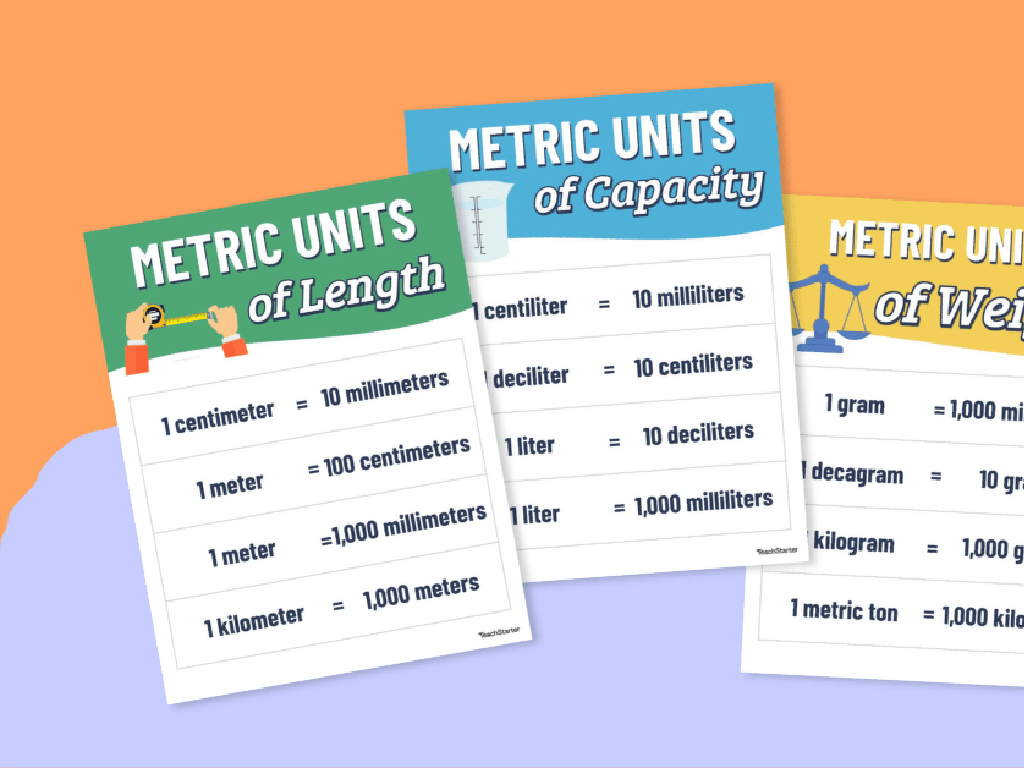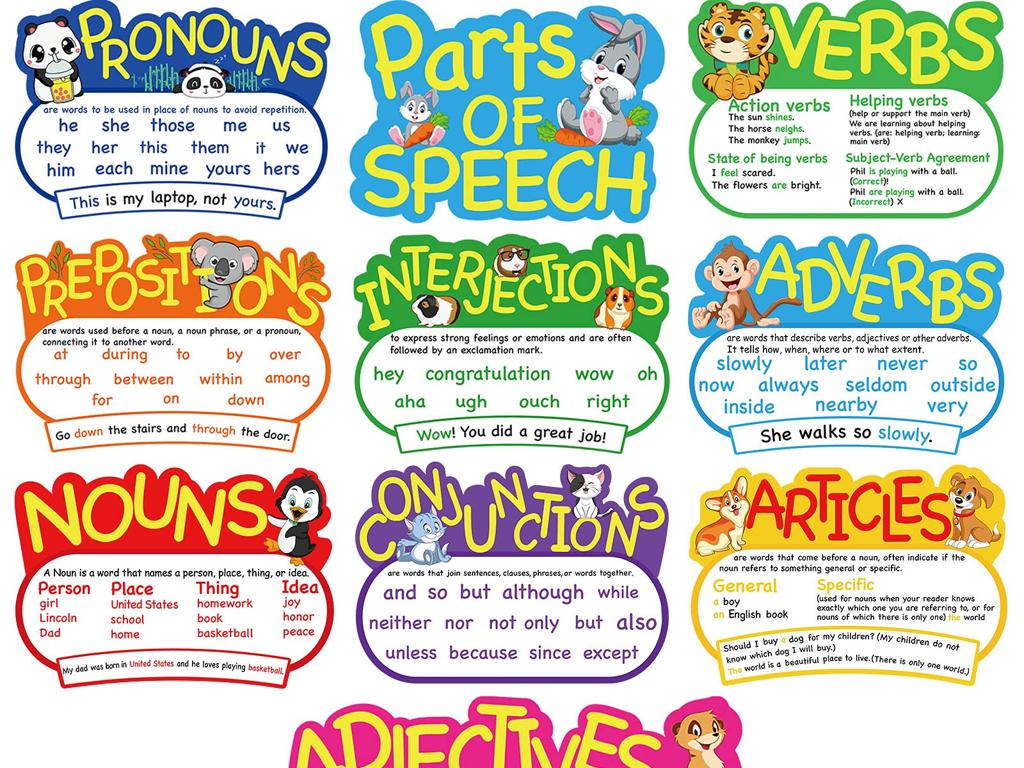Integer Multiplication Rules
Subject: Math
Grade: Seventh grade
Topic: Operations With Integers
Please LOG IN to download the presentation. Access is available to registered users only.
View More Content
Welcome to Integer Multiplication!
– What are integers?
– Integers include positive, negative numbers, and zero.
– Rules for multiplying integers
– Same signs multiply to positive, different signs to negative.
– Multiplying positive & negative integers
– Example: (+3) x (-2) = -6, because the signs are different.
– Practice multiplying integers
– Use examples to solidify understanding.
|
This slide introduces students to the concept of integer multiplication. Begin by defining integers and ensuring students understand that they include the set of whole numbers, their opposites, and zero. Explain the rules for multiplying integers: when the signs are the same, the product is positive; when the signs are different, the product is negative. Provide examples of multiplying both positive and negative integers to illustrate these rules. Encourage students to practice with various examples to become comfortable with the concept. The objective is for students to learn and apply the rules for multiplying integers confidently.
Understanding Integers in Multiplication
– Define integers
– Integers include whole numbers and their negatives, e.g., -3, 0, 4.
– Examples of integers
– Positive: 2, 7, 15; Negative: -5, -8, -13
– Positive vs negative integers
– Multiplying a positive by a negative gives a negative result.
– Integers in real life
– E.g., Temperature changes, bank transactions
|
Begin by defining integers as the set of whole numbers including zero, their opposites, and not including fractions or decimals. Provide clear examples of both positive and negative integers. Explain that when multiplying integers, the product of two integers with the same sign is positive, while the product of two integers with different signs is negative. Relate this to real-life situations such as temperature changes where a drop (negative) in degrees can occur during the night, or bank transactions where deposits (positive) and withdrawals (negative) affect an account balance. This will help students understand the concept of integers and their practical applications in daily life.
Multiplication Basics: Integer Rules
– Multiplication as repeated addition
– If you have 4 groups of 3, that’s 3+3+3+3 or 4×3
– Rules for multiplying positives
– When you multiply two positives, the result is positive
– Arrays to visualize multiplication
– Visual squares where rows and columns represent factors
– Practice with positive integers
|
Begin the lesson by reviewing the concept of multiplication as repeated addition, which provides a foundation for understanding multiplication of integers. Emphasize that multiplying positive numbers is straightforward, with the result always being positive. Introduce arrays as a visual tool to help students grasp the concept of multiplication, where the number of rows represents one factor and the number of columns represents the other. Conclude with practice problems to solidify the rules for multiplying positive integers. Encourage students to draw arrays for the practice problems to better visualize the multiplication process.
Rules of Integer Multiplication
– Positive times Positive equals Positive
– Negative times Negative equals Positive
– Positive times Negative equals Negative
e.g., 3 x -4 = -12 shows how a positive and a negative make a negative.
– Negative times Positive equals Negative
e.g., -2 x 5 = -10 shows how a negative and a positive make a negative.
|
This slide presents the fundamental rules for multiplying integers, which are essential for understanding how to work with positive and negative numbers. Emphasize that the product of two numbers with the same sign (both positive or both negative) will always be positive, while the product of two numbers with different signs will always be negative. Provide examples for the last two rules to illustrate the concept. Encourage students to remember these rules by thinking about real-life situations where gains and losses can be represented by positive and negative numbers, such as money earned (positive) and money spent (negative).
Integer Multiplication Rules
– Negative × Negative = Positive
– When two negatives are multiplied, they cancel out, resulting in a positive.
– Real-world examples for rules
– Discuss examples like debts and temperature changes.
– Class discussion on applications
– Engage with scenarios where integer rules apply.
– Understanding ‘why’ behind the rules
|
This slide aims to demystify the rule that multiplying two negative numbers results in a positive. Start by explaining the concept of ‘negative’ as the opposite and how two ‘opposites’ can result in a ‘positive’ when multiplied. Provide real-world examples such as owing money (debt) and temperature drops below zero to illustrate the rules. Facilitate a class discussion to allow students to apply these rules in various contexts and solidify their understanding. Encourage students to think critically about the rules and come up with their own examples or questions. This will help them to not just memorize the rules but understand the reasoning behind them.
Let’s Practice Integer Multiplication!
– Solve practice problems with integers
– Work in pairs on sample problems
– Collaborate to find solutions and explain reasoning
– Group review of problem answers
– Discuss solutions and strategies as a class
– Understand rules through practice
|
This slide is designed to engage students in active practice of integer multiplication rules. Provide a set of problems that include a variety of integer combinations to ensure students apply the rules correctly. Organize the class into pairs to foster collaborative learning and problem-solving skills. After the pair work, bring the class together for a group review where each pair can present their answers and discuss the strategies they used. This will help reinforce their understanding of the rules and allow for peer learning. Encourage students to explain their thought process during the group review to deepen their comprehension. The teacher should circulate during the activities to offer guidance and ensure that each student is participating and grasping the concepts.
Class Activity: Integer Multiplication Game
– Learn game rules and objectives
– Form teams for competition
– Apply integer multiplication rules
– Remember: Same signs multiply to positive, different signs to negative
– Engage in a fun, competitive game
|
This activity is designed to reinforce the rules of integer multiplication through an engaging and competitive game. Divide the class into small teams to encourage collaboration. The game will consist of multiplying integers with different signs and applying the correct rules: when the signs are the same, the product is positive; when the signs are different, the product is negative. Provide examples like (-2) x (-3) = +6 and (-2) x (+3) = -6 to illustrate the rules. Have a scoreboard to keep track of each team’s points to add a competitive edge. Possible variations of the game could include timed rounds, relays, or incorporating word problems that require integer multiplication. This activity aims to make learning math fun and to help students internalize the multiplication rules through practice.
Wrapping Up: Integer Multiplication
– Recap multiplication rules
– Remember: Same signs multiply to positive, different signs to negative.
– Mastery is crucial
– Understanding these rules is key for advanced math topics.
– Homework: Worksheet practice
– Complete the provided worksheet to practice the rules.
– Share any questions next class
|
As we conclude today’s lesson on integer multiplication rules, it’s important to remind students of the key concepts: multiplying integers with the same sign results in a positive product, while integers with different signs result in a negative product. Emphasize the importance of mastering these rules as they form the foundation for more complex mathematical operations they will encounter in higher grades. Assign the integer multiplication worksheet for homework to reinforce today’s lesson. Encourage students to bring any questions they have to the next class for clarification.






